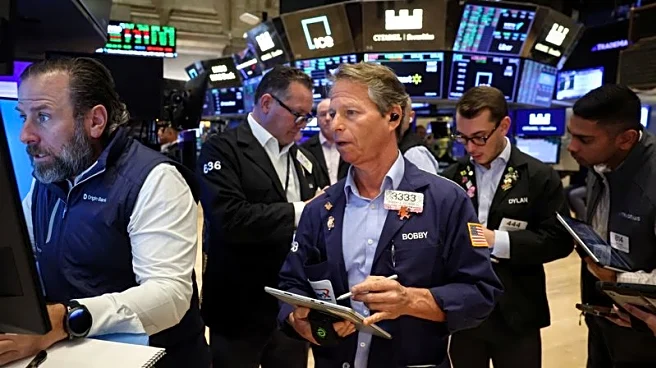What's Happening?
The U.S. dollar index has reached a six-month high, surpassing the 100 level, which has put significant pressure on precious metals and equity markets. The dollar's strength has led to a decline in gold
futures by $70, settling at $3,944, and a 2.45% drop in silver futures to $46.85. This trend reflects the dollar's impact on non-yielding assets as investors shift towards dollar-denominated holdings. The dollar's rise has also affected equity markets, with the S&P 500 and Nasdaq 100 experiencing declines of 1.15% and 2.07%, respectively.
Why It's Important?
The strengthening of the U.S. dollar has broad implications for global markets, particularly for commodities priced in dollars, such as gold and silver. As the dollar appreciates, these commodities become more expensive for foreign investors, leading to decreased demand and lower prices. The impact on equity markets highlights the interconnectedness of currency and asset valuations, as a strong dollar can reduce the competitiveness of U.S. exports and affect corporate earnings. Investors and policymakers will need to consider the implications of a strong dollar on economic growth and inflation.
What's Next?
If the dollar continues to strengthen, it could lead to further declines in precious metal prices and increased volatility in equity markets. Investors may need to reassess their portfolios to mitigate risks associated with currency fluctuations. Central banks and policymakers might also intervene to stabilize currency markets and support economic growth. The ongoing analysis of economic indicators and geopolitical developments will be crucial in predicting future trends in currency and commodity markets.













